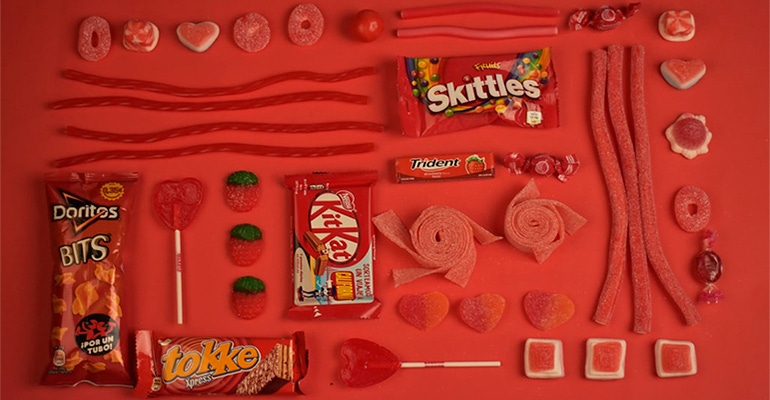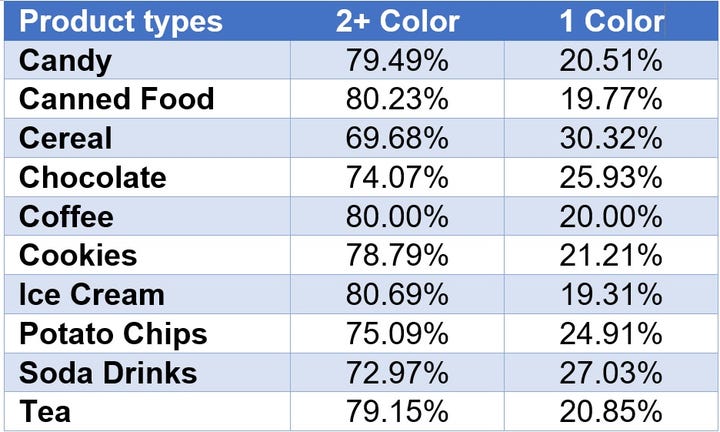The ‘Magic’ Colors of Food and Beverage Packaging Design
Analysis across 10 categories and nearly 2,500 grocery products reveals which hues are commonly used to assist and influence consumers’ buying habits.
December 7, 2020

Food and beverage sectors are saturated with consumer products that range from cookies and cakes to beer and soda. To stand out in a crowded market, brands, marketers, and designers develop eye-catching packaging.
Color psychology plays a major role in the advertising and successful sales. Package color has an effect on consumers and can draw them in or put them off.
To see which colors are used the most, Electrix Intl., a supplier of electrical enclosures and cable management systems, analyzed nearly 2,500 grocery products to reveal what hues are most used to assist and influence the buying habits of grocery shoppers.
What’s the magic color?
Using data from Walmart’s online grocery service, the name, brand, and image of up to 355 different products in ten food and beverage categories was collated, totaling 2,422 products across the range. An algorithm then analyzed colored pixels to calculate the top three colors in each product image. Across those categories that include cookies, chocolate, soda drinks, and ice cream, the most-used packaging color is light gray. In fact, 20.6% of all products that were analyzed are packaged and marketed to consumers using this color.
A theme for less vibrant colors proving most popular follows suit in second and third place, with black (11%) and dark red (8%) joining light gray in the top picks for packaging. You’re less likely to see light purple (one item), blue (three items) and lime (three items) on everyday items.

On closer inspection, the use of light gray tends to be complemented by dark blue and light blue for cookies and ice creams. Meanwhile, red and dark red appears mostly on coffee, cereal, and potato chips.
Only 22% of products tended to have only one color on their packaging with cereal being the most consistent category. Ice cream is most likely to have more than one color on its packaging, with dairy lovers treated to more variation on the front of their tubs and cartons. The breakdown of product types and the amount of colors used for each is detailed above, with canned food, coffee, and ice cream very similar in terms of results.
Please see the accompanying infographic that details the two most common colors for all 10 categories.
A brand’s identity is closely linked to the colors it uses because colors often resonate with strong emotions. With light greys, bold blacks, and dark reds dominating packaging, will we see a change in approach for the future? Will the fact there’s so much importance now on living a greener lifestyle change our opinions on packaging aesthetics? Will we see more vibrance and the use of green to showcase that a product has sustainability at the heart of its design?
Only time will tell.
Andrew Richardson is a copywriter at online marketing agency Mediaworks. Having recently graduated, he now writes for a variety of sectors, including construction, financial services, and hospitality at one of the North East’s leading agencies.
About the Author(s)
You May Also Like




